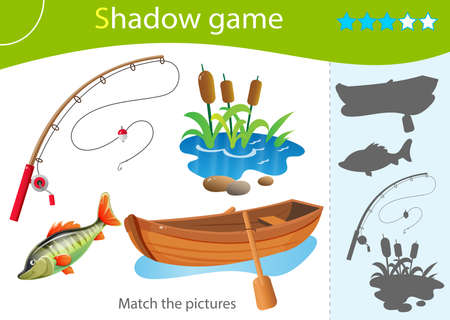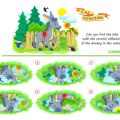Introduction to Native British Flora
Native British flora refers to the diverse range of plant species that have evolved and thrived in the British Isles over thousands of years. These plants are perfectly adapted to local soil, climate, and wildlife, forming the backbone of Britain’s natural ecosystems. Examples include bluebells, primroses, hawthorn, and oak trees. Their presence is vital for supporting a wide variety of insects, birds, and mammals that rely on these native plants for food and shelter. In particular, native flora creates a balanced environment where unique relationships between plants and wildlife can flourish. By recognising the significance of native British flora, we gain an appreciation for its essential role in maintaining biodiversity and providing a healthy habitat for beloved species such as hedgehogs.
Why Native Plants Matter for Biodiversity
Native British flora play a crucial role in maintaining and enhancing biodiversity within gardens, parks, and wild spaces. These plants have evolved alongside local wildlife over thousands of years, creating a balanced ecosystem where each species supports the other. By choosing native plants, you help sustain pollinators, birds, insects, and mammals, including the beloved hedgehog. Native flora provide essential resources such as food, shelter, and breeding grounds that are perfectly suited to the needs of British wildlife.
How Native Flora Support Local Wildlife
Unlike exotic plants, native species offer the right kind of nectar, seeds, and foliage that our insects and animals have adapted to use. For instance, many British butterflies and moths rely on specific native host plants for their larvae. Likewise, hedgehogs benefit from gardens rich in native shrubs and ground cover, which attract their natural prey like beetles, earthworms, and caterpillars.
Key Benefits of Native Plants
| Benefit | Description | Wildlife Supported |
|---|---|---|
| Food Source | Nectar, berries, seeds, and leaves suited to native species diets. | Bees, butterflies, birds, hedgehogs |
| Shelter & Nesting | Dense foliage and ground cover provide safe habitats. | Small mammals, birds, amphibians |
| Pest Control | Encourages beneficial insects that control garden pests naturally. | Lacewings, ladybirds, hedgehogs |
| Biodiversity Boost | Supports a wide range of interdependent species. | The whole local ecosystem |
A Balanced Environment for All
By favouring native British plants in your landscape choices, you promote not just a healthier garden but also contribute to broader conservation efforts. A mix of wildflowers, shrubs, and trees can transform your outdoor space into a sanctuary for countless creatures. This approach helps maintain nature’s delicate balance—offering long-term benefits for both people and wildlife across the UK.

3. The Relationship Between Flora and Hedgehog Welfare
Native British flora plays a vital role in supporting hedgehog populations, offering them essential resources throughout the year. Certain plants are especially beneficial because they provide food, shelter, and safety—three key elements for hedgehog survival. For example, hedgerows composed of hawthorn, blackthorn, and hazel are not only iconic in the British countryside but also serve as natural corridors where hedgehogs can forage safely away from predators and busy roads.
Food Sources from Native Plants
Many native plants attract insects such as beetles, caterpillars, and earthworms, which are staple foods for hedgehogs. Wildflowers like cowslips, oxeye daisies, and bluebells encourage a thriving insect population, ensuring a steady supply of nourishment. By choosing these plants for your garden or local green spaces, you create a miniature ecosystem that sustains both hedgehogs and other wildlife.
Shelter and Nesting Opportunities
Dense ground cover provided by native shrubs and grasses offers crucial nesting sites and protection from harsh weather. Plants such as bramble, dog rose, and ferns create a safe refuge where hedgehogs can rest during the day or hibernate over winter. Leaf piles beneath trees and thick undergrowth further enhance this safe environment, reducing disturbance from humans and pets.
Safety from Predators and Hazards
The structure of native plantings helps shield hedgehogs from potential threats. Thorny bushes like holly or blackthorn deter larger predators while providing hidden paths for hedgehogs to move discreetly between gardens and wild spaces. Well-planned planting schemes also minimise open areas where hedgehogs could be exposed to dangers such as vehicles or domestic pets.
Encouraging a Balanced Ecosystem
By selecting a variety of native species, you promote biodiversity that supports not just hedgehogs but an entire web of life. This holistic approach ensures healthy soil, robust insect populations, and resilient plant communities—all contributing to the long-term welfare of hedgehogs in your local environment.
4. Top Native British Plants to Support Hedgehogs
Creating a hedgehog-friendly garden starts with choosing the right native plants, shrubs, and trees. These not only provide shelter and food for hedgehogs but also encourage a thriving ecosystem in your green space. Below is a curated selection of essential British flora that directly benefit hedgehogs, complete with practical planting tips.
Key Native Flora for Hedgehog Welfare
| Plant Type | Species | Benefits for Hedgehogs | Practical Planting Advice |
|---|---|---|---|
| Trees | Hawthorn (Crataegus monogyna) | Dense branches offer nesting sites and protection; flowers attract insects which are food for hedgehogs. | Plant in well-drained soil, ideally as part of a mixed native hedge. |
| Shrubs | Dog Rose (Rosa canina) | Tangled growth gives safe cover; rosehips attract insects and birds, increasing food availability. | Best in sunny spots; works well woven through native hedges. |
| Shrubs | Hazel (Corylus avellana) | Nuts feed small mammals (which are part of the food chain); leaf litter provides overwintering sites for insects. | Grow as a hedge or in clusters; coppice regularly to keep bushy. |
| Ground Cover/Plants | Lesser Celandine (Ficaria verna) | Early spring flowers support pollinators; dense foliage offers ground cover for hedgehogs. | Tolerates shade; plant beneath shrubs or trees. |
| Herbaceous Perennials | Cow Parsley (Anthoiscus sylvestris) | Umbrella-like flowers attract insects; dying foliage creates hiding places in late summer. | Sow seeds directly in autumn for naturalistic drifts along borders. |
| Ivy (Climber) | Ivy (Hedera helix) | Evergreen cover for nesting and shelter; autumn berries feed birds that disperse hedgehog prey insects. | Let ivy climb fences or grow as ground cover in shaded areas. |
| Trees/Shrubs | Elder (Sambucus nigra) | Berries and flowers support various wildlife; fallen leaves add to insect-rich leaf litter. | Tolerates most soils; prune after fruiting to maintain shape and encourage dense growth. |
Simple Steps for Hedgehog-Friendly Planting
- Create connectivity: Combine trees, shrubs, and ground plants in mixed borders or informal hedges to form protective corridors for hedgehogs to roam safely between gardens.
- Avoid pesticides: Allow natural insect populations to flourish, providing essential food sources for hedgehogs year-round.
- Add log piles: Position logs or brushwood under shrubs to boost insect life and give extra shelter during colder months.
- Diversify structure: Layer taller trees, mid-height shrubs, and low-growing plants to mimic natural woodland edges—favourite habitats for hedgehogs.
- Pile up leaves: Leave autumn leaves under hedges and bushes so hedgehogs can use them for hibernation nests (hibernacula).
- Provide access: Ensure there are gaps at the base of fences or boundaries (about 13cm square) so hedgehogs can travel freely between gardens and forage efficiently.
- Select local varieties: Use seeds or young plants from reputable UK nurseries specialising in native species to ensure robust adaptation to local conditions and best support regional biodiversity.
Your Next Step: Plant Thoughtfully, Welcome Wildlife
The right mix of native British flora will transform your garden into a sanctuary where hedgehogs thrive. By planting thoughtfully and following these practical tips, you help boost local biodiversity while supporting one of Britain’s most beloved wild creatures—the humble hedgehog.
5. Planting and Maintaining a Hedgehog-friendly Garden
Designing Your Garden for Hedgehogs
To create a welcoming space for hedgehogs, start by considering garden layout and accessibility. Leave small gaps (13cm x 13cm) at the base of fences or walls, allowing hedgehogs to roam freely between gardens. Avoid using artificial turf or heavy paving, as these surfaces hinder movement and reduce insect diversity – both crucial for hedgehog welfare.
Selecting Native British Flora
Choose a variety of native British plants such as hawthorn, dog rose, foxglove, bluebell, and primrose. These species provide natural shelter, nesting materials, and attract insects that are vital food sources for hedgehogs. Layer planting with shrubs, wildflower patches, and log piles to offer both cover and foraging opportunities. Remember to include low-growing plants near boundaries to create safe corridors for nocturnal travel.
Sustainable Planting Practices
Opt for organic gardening methods whenever possible. Avoid pesticides and slug pellets, which can be harmful or even fatal to hedgehogs. Instead, encourage natural pest control by attracting birds and beneficial insects. Use peat-free compost to protect local habitats and support healthy soil life.
Encouraging Hedgehog Breeding
Provide suitable nesting sites by allowing areas of your garden to grow wild, leaving undisturbed corners with leaf litter and twigs. Purpose-built hedgehog houses placed in quiet, shaded spots can further boost breeding success. Ensure fresh water is always available in shallow dishes but avoid offering milk as it can upset their digestion.
Ongoing Care and Maintenance
Regularly check for hazards such as netting, open drains, or uncovered ponds – all potential dangers for hedgehogs. Maintain a gentle mowing regime: leave some areas unmown during spring and summer to protect nests and caterpillars. Throughout the year, continue replenishing food and water supplies, especially during dry spells or before hibernation periods.
Welcoming Wildlife for a Balanced Ecosystem
A thriving hedgehog-friendly garden will naturally attract other wildlife like songbirds, frogs, and beneficial insects. By nurturing native flora and following sustainable practices, you’ll help build an interconnected landscape where biodiversity flourishes alongside cherished British species like the hedgehog.
6. Minimising Hazards and Encouraging Connectivity
To truly support hedgehog welfare and enhance biodiversity with native British flora, it’s essential to make your garden both safe and accessible. One of the biggest threats to hedgehogs comes from hazards such as pesticides and impermeable fences. Here’s how you can reduce these risks while promoting movement between gardens.
Avoiding Harmful Chemicals
Pesticides, slug pellets, and chemical fertilisers may protect plants but pose significant dangers to hedgehogs and other wildlife. Instead, opt for organic methods: encourage natural predators, use beer traps for slugs, or sprinkle crushed eggshells around plants. By keeping your garden chemical-free, you create a healthier space for both flora and fauna.
Rethinking Fencing
Solid fences can trap hedgehogs or prevent them from finding food and mates. To help them roam freely, create ‘hedgehog highways’—small gaps (about 13cm x 13cm) at the base of fences or walls. Coordinate with neighbours to connect these passageways across gardens, forming a network that supports safe hedgehog travel.
Connecting Green Spaces
Planting native hedgerows instead of close-boarded fencing not only provides shelter but also acts as a corridor for wildlife. Hazel, hawthorn, and blackthorn are excellent choices that offer both cover and food sources. If replacing a fence isn’t possible, climbing plants like honeysuckle or ivy can soften boundaries while still encouraging movement.
Additional Tips for Safe Passage
Keep garden ponds shallow-edged or provide escape ramps so thirsty hedgehogs won’t drown. Remove netting when not in use and check compost heaps before turning them over. These small actions make your space safer for all creatures.
By reducing hazards and improving connectivity with thoughtful planting and design, you foster a welcoming environment where hedgehogs—and local biodiversity—can thrive.
7. Conclusion: Encouraging Community Involvement
Enhancing our local environments for hedgehogs and overall biodiversity is not a solitary task—it flourishes through collective action. By choosing to plant native British flora in our gardens, community spaces, and shared green areas, we each play a vital part in creating safer habitats and richer ecosystems. Every wildflower patch, native shrub, or hedgerow planted can provide food, shelter, and safe corridors for hedgehogs and countless other species.
This is an open invitation to everyone: whether you have a large garden or a small balcony, there are ways to contribute. Join local gardening groups, participate in community planting days, or simply share knowledge with neighbours about the benefits of native plants. Support from councils and wildlife organisations can also amplify your efforts, so do reach out and get involved in wider projects when possible.
Together, we can turn our towns and villages into thriving sanctuaries for hedgehogs and native wildlife. Let’s make conscious choices for our planting schemes, celebrate the beauty of our natural heritage, and inspire others by example. Your actions—no matter how small—can make a lasting difference. Start today by planting one native species, encouraging a friend to do the same, or volunteering for a community project. The future of Britain’s biodiversity depends on us all working hand in hand.


